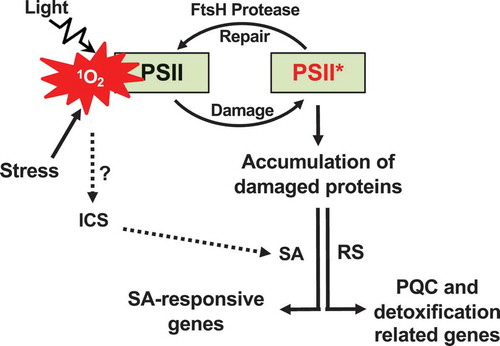Figures & data
Figure 1. Chloroplast proteostasis-associated retrograde signaling pathways. Inactivation of FtsH2 results in the accumulation of damaged proteins in the chloroplasts of var2-ko. This defect causes enhanced levels of ROS and a change in redox status in the chloroplasts, further impairing the overall proteostasis. The dysfunctional chloroplasts then readjust chloroplast proteostasis, most likely via RS, leading to the accumulation of proteins involved in PQC and ROS detoxification. The reinforced problem in proteostasis appears to also increase the cellular SA content via the chloroplast ICS pathway in the absence of transcriptional induction of genes involved in SA synthesis. SA then rapidly induces SRGs.

